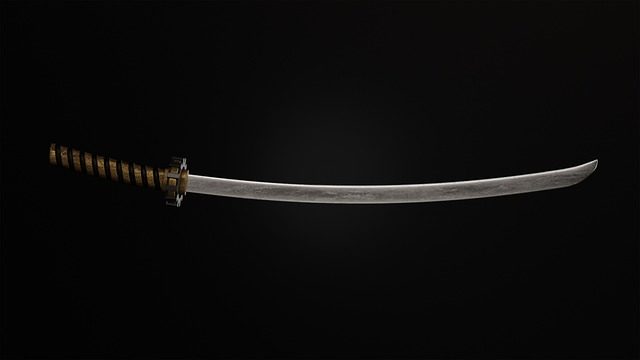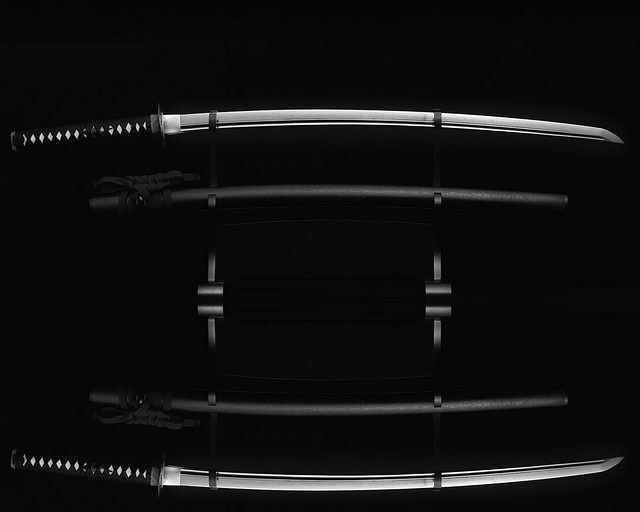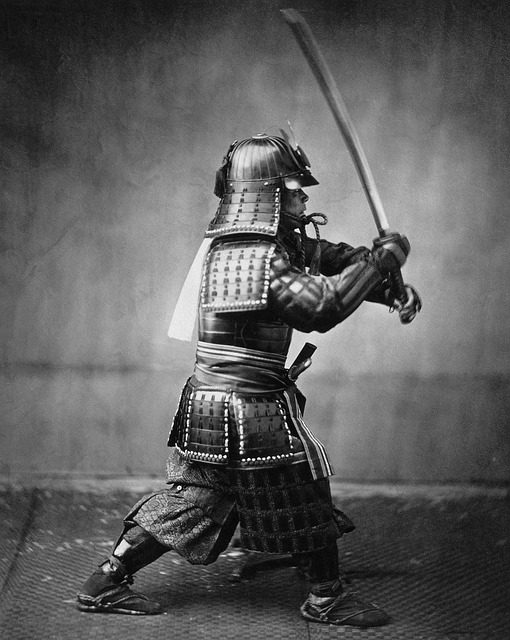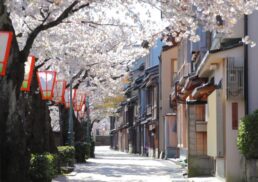Immerse yourself in the world of the Japanese katana, a symbol of honor and loyalty, a testament to a warrior’s heart. This exploration will delve into the heart of Japanese culture, craftsmanship, and tradition, revealing the fascinating history and techniques behind the creation of these iconic swords. So let’s embark on this journey, shall we?
Table of Contents
Short Summary
The katana is a Japanese sword renowned for its curved, single-edged blade forged from high-carbon steel.
The skillful crafting of the katana is an ancient art form requiring expertise and tamahagane steel.
Samurai swords are revered symbols embodying honor, courage, loyalty and self discipline. Modern katanas require proper maintenance to ensure quality.
The Essence of the Katana

The Japanese katana, a symbol of the samurai spirit, is a distinctive Japanese sword characterized by its curved, single-edged blade forged from high-carbon steel. Its story begins in the heat of the battles that marked feudal Japan, where the need for a swift, efficient weapon gave birth to its design. Today, katana blades continue to captivate enthusiasts and collectors worldwide, many of whom seek to acquire their own sword.
The katana’s cutting edge, coupled with its unique curved blade, made it a formidable weapon in close combat. From the tachi to the uchigatana, the katana evolved, becoming the primary symbol of the samurai’s courage and duty.
High Carbon Steel
The heart of the katana lies in its blade, forged from high carbon steel. This type of steel, with its high carbon content, offers a perfect blend of hardness, strength, and durability, serving as the ideal material for the katana sword.
Such resilience of high carbon steel ensures the strength, durability, and sharpness that define the quintessential katana. This material stands the test of time, retaining the katana’s sharp point and hard edge, making it a symbol of the samurai’s unwavering spirit.
Curved Blade Design
The distinctive curved blade of the katana is not just an aesthetic choice. This unique design was preferred over the straight sword due to its suitability for mounted combat, a common battlefield scenario in feudal Japan. The curved blade design facilitates efficient cutting and slashing, making it an effective and formidable weapon. The curvature, handle length, and shape of the guard are all factors that must be taken into account when forging a katana, ensuring that the final product is not only a weapon, but also a work of art. Each katana is crafted with precision and care, making it a truly unique and powerful weapon.
The Art of Japanese Sword Making

The creation of a katana is an art form, a tradition passed down through generations. This intricate process involves the use of tamahagane steel and techniques such as folding and differential tempering to create a strong, sharp, and flexible blade.
The entire procedure for forging a katana requires the proficiency of a qualified blacksmith or swordsmith. The tempering process for a katana blade involves differential heating and cooling of its sections. This results in a hard edge and a softer spine, which are typical characteristics of a katana sword.
Tamahagane Steel
Tamahagane steel is a traditional Japanese steel used in the forging of katanas. Known for its superior quality, durability, and purity, tamahagane steel is produced through the ancient process of “tatara” ironmaking, a process that takes place over a period of three days and nights.
The high carbon content and purity of tamahagane steel make it an excellent choice for forging katanas. Its unique characteristics include:
Robustness
Suppleness
Rust-proof properties
A hard, keen edge that is resistant to blunting
Folding and Differential Tempering
The techniques of folding and differential tempering are pivotal in the creation of katanas. Folding is a method of purification that strengthens the blade and allows the combination of different types of steel to create a blade with varying properties. The result of folding and differential tempering is a blade with a hard, sharp edge and a flexible, shock-absorbing spine. This combination results in a weapon that is not only lethal in battle, but also resilient and durable, a testament to the art of Japanese sword making.
Samurai Swords: A Symbol of Honor and Loyalty

Samurai swords, also known as japanese swords, in particular the katana, are more than just weapons. They are symbols of honor and loyalty, emblematic of the samurai spirit. These swords are deeply rooted in feudal Japan and continue to hold cultural significance in modern Japanese traditions.
The katana was not just a sword, but an extension of the samurai’s soul. It exemplified their steadfast spirit and unparalleled skill. In the hands of a samurai, the katana was a representation of their dedication to their lord and their obligation to safeguard their people.
Feudal Japan
Feudal Japan was a time of warfare and power struggles, with the samurai class at the forefront of these battles. The katana, as the primary weapon of the samurai, represented their status and skill.
The katana became a symbol of honor and loyalty, believed to be a reflection of the samurai’s soul. Its presence signified the samurai’s dedication to their lord and their commitment to protect their people.
Japanese Culture and Traditions
The katana continues to be revered in Japanese culture and traditions, standing as a tangible representation of the values of bushido, the samurai’s code of honor. These values of honor, courage, loyalty, and self-discipline are embodied in the katana, a symbol of the samurai’s spirit.
Today, the katana is still held in high esteem in Japanese culture and traditions. Whether in martial arts dojos, historical museums, or in the hands of dedicated collectors, the katana serves as a constant reminder of the samurai spirit and the virtues of chivalry.
Modern Katanas: Collecting and Appreciation
In the modern age, the allure of the katana continues to captivate. Whether for collection or appreciation, these swords are sought after for their authenticity, craftsmanship, and history.
Proper maintenance and care for these historic weapons are essential, preserving their quality and prolonging their lifespan.
Authentic vs. Replica Katanas
In the world of katana collecting, authenticity is highly prized. Authentic katanas are hand-forged by master smiths, embodying years of tradition and skill. In contrast, replica katanas may be mass-produced, lacking the same degree of quality and craftsmanship.
Despite their visual resemblance to authentic katanas, replicas may not possess the same level of craftsmanship or value. It is vital to understand the differences to make an informed choice when starting or expanding a katana collection.
Learn more, visit Real vs Fake Katana: How to Tell if a Katana is Real? – Swordis
Caring for Your Samurai Sword Collection
Preserving the integrity and appearance of a samurai sword collection requires proper care. Proper storage is paramount to safeguard the blade’s condition and avert corrosion and damage. Each katana should be handled with respect and caution, acknowledging the blade’s sharpness and potency.
Cleaning a samurai sword should be done with the following steps:
Use a soft cloth and a mild soap solution to clean the blade, avoiding harsh chemicals or abrasive materials that can cause damage.
Dry the blade thoroughly after cleaning to prevent moisture from causing rust or corrosion.
Regularly oil the blade with a light oil, such as mineral oil or gun oil, to keep it in pristine condition.
Store the sword in a dry and secure location to protect it from damage and ensure its beauty and power are preserved for future generations.
Choosing the Perfect Katana
Choosing the perfect katana requires careful consideration of various factors. These include the blade length and style, reflecting the user’s height and intended use of the sword.
The customization options also need to be taken into account, allowing the creation of a truly unique and personal weapon.
Blade Length and Style
In selecting the ideal katana, understanding the significance of blade length and style is crucial. These factors impact the sword’s balance, weight, and cutting ability. A longer blade can add more weight and power to the cut, yet may be slower and more challenging to wield.
The style of the blade also plays a crucial role. With options ranging from the traditional tachi style to the modern uchigatana style, one can choose a blade that reflects their unique style and purpose.
Whether for display or practice, the perfect katana is a blend of form and function, a testament to the artistry and craftsmanship of Japanese swordsmanship.
Customization Options
Customizing a katana adds a personal touch to the sword, reflecting the owner’s taste and preferences. From the type of steel used in the blade to the design of the handle and scabbard, each element can be tailored to create a truly unique weapon.
Such customization options allow for a deeper connection between the owner and the sword. Every detail, from the color and pattern of the tsuka-ito to the choice of tsuba, can be chosen to reflect the individual’s taste and style. The result is a katana that is not only a weapon but also a personal expression of the owner’s spirit.
Japanese Swordsmanship: Training and Practice
Mastering the art of Japanese swordsmanship requires discipline, practice, and guidance. The journey involves learning kata, practicing cutting techniques, and engaging in sparring sessions.
Central to this journey is finding a reputable instructor or dojo that can provide proper guidance and instruction.
Kata and Cutting Practice
Learning kata is a crucial step in mastering Japanese swordsmanship. These pre-arranged forms of swordplay serve as a structured way to practice and refine techniques. From basic stances to advanced maneuvers, kata serves as a roadmap to proficiency in using the katana.
Cutting practice, or tameshigiri, complements kata by providing practical experience in using a live blade. This involves using the katana to cut through targets constructed of straw, bamboo, or other materials, honing the swordsman’s precision and control.
Finding a Reputable Instructor or Dojo
Finding a reputable instructor or dojo is crucial to learning Japanese swordsmanship correctly and safely. A reliable instructor can guide students through the intricate techniques of kenjutsu, ensuring proper form and discipline are maintained during training.
When selecting a style or tradition for katana training, thorough research is necessary. Each style has its unique philosophies and techniques, so it’s important to find one that aligns with the student’s goals and preferences. A visit to the dojo and observing a class can provide valuable insights into the instructor’s teaching approach and the overall atmosphere of the learning environment.
Summary
From its origins on the battlefields of feudal Japan to its place in modern martial arts dojos, the katana remains a symbol of honor, loyalty, and the samurai spirit. Through its unique design, craftsmanship, and the techniques used in its creation, the katana embodies the essence of Japanese culture and traditions. Whether you’re a collector, a martial artist, or simply an admirer of these ancient weapons, understanding the katana’s history and significance deepens this appreciation. After all, the katana is not just a sword, but a reflection of the samurai’s soul.
Frequently Asked Questions
Why is it called katana?
The word ‘katana’ is a Japanese reading of the kanji for’single edged blade’, which was adopted as a loanword by the Portuguese where it came to mean ‘large knife’ or machete.
This loanword was then adopted by other cultures, and today it is used to refer to a specific type of Japanese sword.
Is A katana stronger than a sword?
The katana and sword each have unique characteristics, with the katana being shorter and lighter with a stronger cutting edge, while the longsword is longer and heavier with more stopping power.
Ultimately, which weapon is better suited for a situation depends on the task at hand – the katana may be better for cutting and slicing, whereas the longsword is preferable for thrusting and parrying.
Do Japanese still use katanas?
Yes, the katana still carries symbolic significance in Japanese culture and is used by modern martial artists.
Can I bring back a katana from Japan to us?
Yes, it is possible to bring back a katana from Japan to the United States, but one must adhere to certain regulations and obtain proper documentation and permits in order to do so legally.
This includes obtaining a Certificate of Authenticity from the Japanese government, as well as a U.S. Customs Form 4457. Additionally, the katana must be declared to U.S. Customs upon arrival in the United States. Failure to do so could result in the failure to do so.
How much does a katana cost?
A basic Katana sword typically costs between $60 and $300, while higher quality models can cost up to $12,000.









